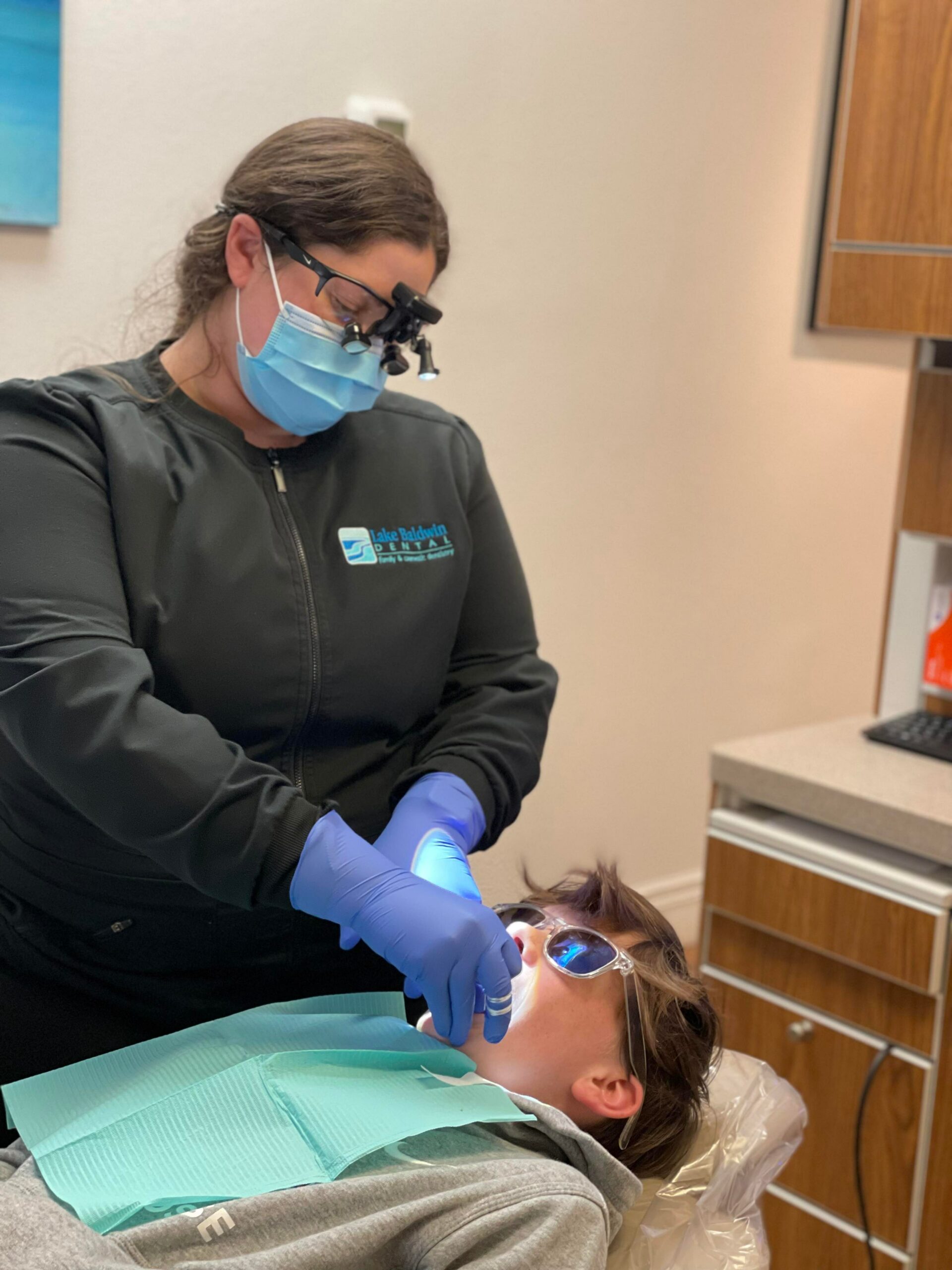Anywhere from about 5 to about 7 years old, most children lose their first tooth. It’s a huge event for many families, marking a milestone in their development from little kid to big kid. There will then be several years of what’s called mixed dentition. Be sure you’re ready for all the changes coming your way!
What Is Mixed Dentition?
Mixed dentition refers to the phase when a child has some baby teeth and some permanent teeth. It typically lasts from about 6 years old to about 13 years old. However, these ages can vary from person to person. Some kids lose their first tooth very young, and some might not get their first visit from the tooth fairy until they’re 8!
This phase of dental development is incredibly important. It marks the end of your child’s second chances when it comes to their teeth! As those permanent teeth start to make their first appearances, make sure you’re up to date on dental health exams and cleanings. X-rays are also especially valuable during this phase, as it can confirm whether those permanent teeth are growing on schedule and in the right position.
Mixed Dentition Can Be a Challenge
Permanent teeth seem to come in fits and starts. It may feel like all the teeth are falling out at once. Then there may be months or even years when nothing happens. One thing stays consistent throughout this 6-year period, though: it can make caring for your teeth extra difficult.
When teeth are getting ready to fall out, they may become extra tender and sore. Loose teeth can make it difficult to chew and bite normally, present challenges with speaking, and make brushing uncomfortable.
Keeping the teeth clean during this time can be especially challenging. Not only are the teeth more tender, meaning your child might not want to brush as thoroughly. They’re also more likely to be coming in at strange angles or unusual positions. Crowding, rotations, and excess spacing can all present challenges to keeping the teeth clean. That means your child may be at especially high risk for developing cavities during mixed dentition.
You Might Not Know New Teeth Are There!
Many people only become aware of new permanent teeth when a baby tooth gets wiggly. But did you know your child’s first permanent tooth will probably come in without any primary teeth falling out? In general, the first permanent tooth will actually be a molar that grows in all the way in the back, behind the very last baby tooth.
Your child might complain of soreness or discomfort while eating hard or crunchy food while those molars are coming in, but many times they won’t notice at all. When your child is around 5 or 6 years old, observe their teeth carefully from time to time. Have them lay their head in your lap and use a flashlight if necessary to get a good look. Watch for little white nodules pushing through the gums in the back of the mouth.
This is another reason regular dental care is so important! I can’t tell you how many times I’ve announced first permanent teeth for families who had no idea. It’s important to stay alert to changes in the back of the mouth because you’ll want to keep those areas especially clean while the molars come in. And keep in mind, the same process will happen again around age 12 with second molars, and maybe even around age 18 with wisdom teeth!
How to Protect Permanent Teeth from the Beginning
You want to give those brand-new permanent teeth their very best chance at lifelong health, right from the beginning. Ironically, the teeth may be at their highest risk for decay while they’re just erupting. Teeth that are only partially grown in may be more difficult to reach with a toothbrush. Especially for molars, they might peek out of the gums, but still be partially covered, creating a serious trap for bacteria and food. Many children also start orthodontic treatment while they’re in mixed dentition, adding another challenge to keeping the teeth clean at home.
Home Care for New Permanent Teeth
Great home care depends on having the right tools for the job and committing to a great routine. It might be a challenge to keep kids motivated, so you as their caretaker or parent might have to pick up the slack for them. Be sure all the teeth are getting thoroughly brushed at least twice every day and flossed at least once.
Gadgets can come in especially handy during this time. We highly recommend investing in an electric toothbrush. Sonicare is our usual go-to, but there are lots of options out there! The Kids Sonicare is appropriate for kids as young as 3, all the way through until about 10 or 11 years old. Then it’s time to switch to an adult version. Many children can tolerate the more powerful adult brush even younger than 10, so talk to your hygienist about selecting the best option for your family.
A WaterPik can also make a huge difference for mixed dentition and orthodontic appliances. For those teeth that are still buried in the gums, no amount of brushing or flossing can sweep out bacteria and food debris from under the tissue. A WaterPik, on the other hand, can effectively sweep out any material trapped in hard-to-reach places and help keep cavities at bay.
New Teeth Need Fluoride!
Children in mixed dentition need fluoride. If they haven’t already switched from fluoride-free training toothpaste to regular, make that switch now. That doesn’t mean they have to jump straight to intense mint flavors! There are lots of bubblegum and fruity options with fluoride. A fluoride rinse such as ACT can also be a useful addition to ensure great protection.
During cleaning appointments, your hygienist will probably offer a fluoride treatment. We highly recommend taking advantage of that while new teeth are coming in. This great mineral supplement will reinforce that fresh enamel and protect it while it’s still growing in. Your insurance may cover fluoride treatment for kids up to age 16 or 19, so be sure to check!
Being your family’s dental team means being there for you through these milestones. It’s one of our favorite parts of the job. If you have any questions or concerns about your child’s permanent teeth, or when the tooth fairy might need to hit the ATM in preparation for some lost baby teeth, don’t hesitate to ask! Call today to schedule your child’s next dental health check so we can prepare them to care for those new adult teeth. Keep smiling, Orlando!


